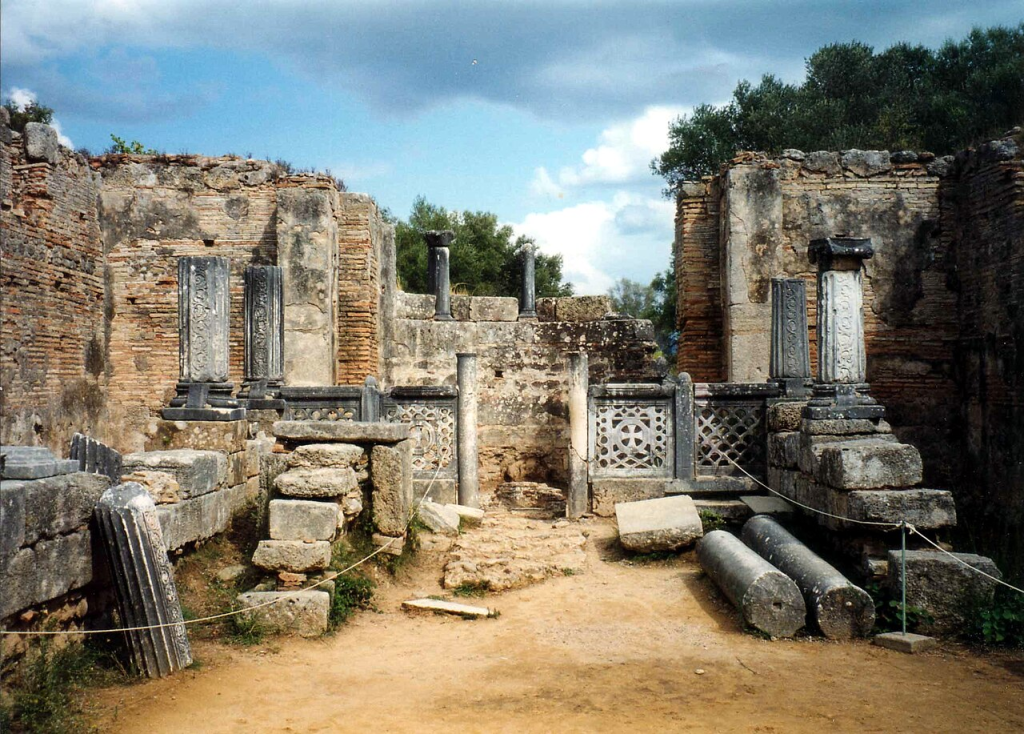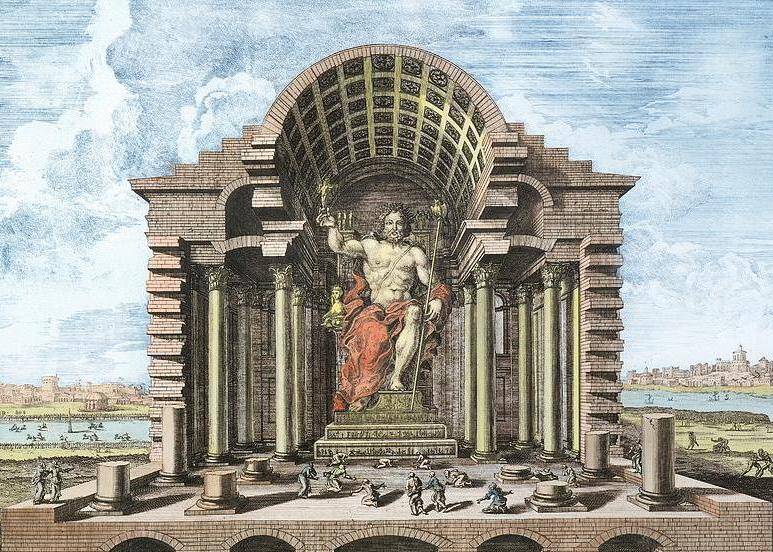The 40-foot statue of Zeus once stood majestically at Olympia, capturing the awe and admiration of all who beheld it. As one of the seven wonders of the ancient world, this magnificent sculpture of the Greek god of gods, Zeus, graced the temple inside the sanctuary of Olympia on the Greek Peloponnese Peninsula for over 800 years. However, despite its grandeur, the statue vanished from history, leaving behind intriguing mysteries and fascinating tales. In this article, we will delve into the astonishing details of the statue of Zeus at Olympia, explore its destruction, and uncover the story of its creator, the renowned sculptor Phidias.
Astonishing Details On The Statue Of Zeus At Olympia
The temple of Zeus at Olympia, completed around 463 B.C.E., was an architectural marvel of Doric design. The exterior was adorned with 13 columns on the long side and six columns on the short side, showcasing intricate sculptures depicting scenes from Greek mythology. However, the interior was deliberately kept simple to emphasize the larger-than-life statue of Zeus.

The awe-inspiring statue of Zeus, crafted by the master sculptor Phidias, was a chryselephantine sculpture. It consisted of ivory plates and gold panels carefully laid over a wooden framework. The majestic Zeus was depicted seated on his royal throne, wearing a robe adorned with gold plates intricately decorated with flora and fauna. In his right hand, he held a figure of Nike, the winged goddess of victory, while an eagle sat upon his scepter in his left hand.
The throne itself stood on a black Eleusinian marble pedestal, elevating the sculpture to an even greater stature. Nearby, a shallow reflecting pool was constructed, amplifying the statue’s magnificence as its image shimmered in the oil-filled water.
The Destruction Of The Temple And Statue
The statue of Zeus at Olympia enjoyed a revered existence for over 800 years. However, in 379 C.E., the Roman Emperor Theodosius I assumed power and favored Christianity, leading to the cessation of all cult practices, including the worship of Greek gods like Zeus. As a result, the Olympic Games and the honor bestowed upon Zeus came to an end, marking the final ancient Olympics in 393 C.E.

Historical accounts suggest that around 395 C.E., the statue was moved to Constantinople, where it faced destruction either by an earthquake or tsunami during the 6th century C.E. Alternatively, some historians propose that a fire in 475 C.E. brought about the statue’s demise. The temple itself also suffered a similar fate, succumbing to earthquakes in 522 and 551 C.E.
The loss of the statue of Zeus at Olympia was deeply felt by people of the time, and it remains one of the Seven Wonders of the ancient world, now immortalized only through descriptions and coin illustrations.
Various legends surround the statue’s destruction. According to Roman historian Suetonius, the Roman Emperor Caligula had plans to replace the heads of renowned statues of gods, including Jupiter at Olympia, with his own likeness. However, before this plan could be executed, Caligula was assassinated, and it is said that the statue of Zeus foretold his death with a peal of laughter.

In 391 AD, the Christian Roman Emperor Theodosius I banned pagan cults and closed temples, leading to the abandonment of the sanctuary at Olympia. The exact circumstances of the statue’s destruction remain a mystery, with one account suggesting it was destroyed during a fire in the Palace of Lausus in 475 AD, while others point to the severe damage caused by a fire in the temple in 425 AD as a possible cause of its demise.
A Glimpse Into The Past
The commissioning of the statue of Zeus was a significant moment in history. The Eleans, custodians of the Olympic Games, sought to outdo their rivals and enlisted the renowned sculptor Phidias for the task. The Zeus statue occupied half the width of the aisle of the temple constructed specifically to house it. The image of Zeus standing tall gave the impression that he would unroof the entire temple if he were to arise.
FAQs about The Statue Of Zeus at Olympia
The statue of Zeus at Olympia was a chryselephantine sculpture, made of ivory plates and gold panels laid over a wooden framework. It depicted Zeus seated on his royal throne, adorned with gold plates intricately decorated with flora and fauna.
The renowned sculptor Phidias, also known as Pheidias, was the mastermind behind the creation of the statue of Zeus at Olympia. He was also responsible for crafting the legendary statue of Athena Parthenos inside the Parthenon.
The statue of Zeus and the temple at Olympia met their demise in the 6th century C.E. The statue was allegedly moved to Constantinople and destroyed by an earthquake or tsunami. Alternatively, some theories suggest that a fire caused its destruction. The temple suffered a similar fate, with earthquakes ultimately leading to its complete destruction.
Phidias fell out of political favor due to his association with prominent figures, including General Pericles. He was accused of stealing gold and ivory during the creation of the Athena Parthenos statue, which led to his imprisonment and eventual fate.




An added important component is that if you are an elderly person, travel insurance regarding pensioners is something you must really think about. The mature you are, greater at risk you are for making something awful happen to you while abroad. If you are not necessarily covered by many comprehensive insurance plan, you could have many serious difficulties. Thanks for giving your advice on this web blog.
Howdy! I know this is kind of off topic but I was wondering which blog platform are you using for this website? I’m getting tired of WordPress because I’ve had issues with hackers and I’m looking at alternatives for another platform. I would be great if you could point me in the direction of a good platform.
Interesting blog post. Things i would like to bring up is that personal computer memory must be purchased but if your computer can’t cope with whatever you do with it. One can install two random access memory boards of 1GB each, for instance, but not certainly one of 1GB and one with 2GB. One should look for the car maker’s documentation for the PC to be certain what type of memory space it can take.
I can’t express how much I appreciate the effort the author has put into producing this remarkable piece of content. The clarity of the writing, the depth of analysis, and the wealth of information provided are simply remarkable. His passion for the subject is apparent, and it has certainly resonated with me. Thank you, author, for providing your insights and enriching our lives with this incredible article!